Very often in old houses it is necessary to repair electrical wiring connect aluminum wires of old wiring with copper- newly laid.
Those who are unfamiliar with this topic and make repairs with their own hands simply stupidly twist them together and close them in the junction box, not understanding which headache they will get themselves in the future ...
This topic - copper with aluminum - is encountered not only when installing internal electrical wiring, but also when replacing the entrance to the house
The problem is that the wires overhead line(VL) - aluminum and if you do input cable copper, then it’s impossible to just wind a cable core onto an aluminum wire!
But they do! How many times have I seen it myself ... And then they are surprised - “Why is the light in my house blinking ?!”
Yes indeed, why? But because of what.
A little chemistry. Aluminum is a very active metal, try soldering it simple method how copper wire, nothing will work.
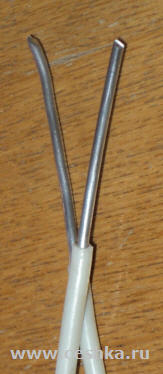 Aluminum actively reacts to air, or rather not even to the air itself, but to moisture in the air, quickly forming a thin film of oxide on its surface.
Aluminum actively reacts to air, or rather not even to the air itself, but to moisture in the air, quickly forming a thin film of oxide on its surface.
This film provides high resistance to electric current - the so-called “transitional resistance” appears at the junction of the wires.
But the copper wire also oxidizes, but not as strongly and intensively as aluminum and the oxide film on the copper surface has much less resistance to the flow of current.
It turns out that when connecting copper and aluminum wires, they contact with their oxide films.
Also, these two metals have different linear expansion, therefore, when the temperature in the room changes or the magnitude of the current flowing through the copper-aluminum twist, the contact between them over time weakens.
Transitional resistance in the twist so "slowed down" electricity, and even the weakening of the contact further increased the value of the transient resistance.
This causes the twist to start bask, the further, the more, the insulation of the wire is heated. is destroyed by heat and can even tan.
You yourself know how many houses burned down due to faults in the electrical wiring, and it is often the contact resistance or poor contact that is to blame for this.
Speaking of transient resistance.
it active resistance , that is, all the power on it is 100% converted into heat, well, as in an iron, for example)))
To understand what it is, imagine that two wires are interconnected nichrome wire and an electric current flows through them, which heats the nichrome red hot.
Here, inside the twist of copper and aluminum wire, there is such a red-hot nichrome thread. Do you need it?
Remember, the transition resistance is an analogue of a hot nichrome filament.
Yes, chemistry is enough. Now how to get out of the situation if necessary connect copper wire to aluminum.
The point is this: the main thing is that these two metals did not touch between themselves. Between them there must be a material that is neutral with respect to them, naturally conductive.
It can be lead solder, duralumin, steel, stainless steel, chromium coating.
By the way, interestingly, it’s impossible: zinc, carbon (graphite) and silver with gold and platinum.
Although I can’t imagine who can afford such a pleasure - to combine copper with aluminum through platinum)))
In this case, if there is a sea of \u200b\u200bmoney, it’s better to make wires completely out of platinum, voltage losses will disappear completely)))
So, we connect copper with aluminum:
- With terminal clamps;
- Bolted connection through washers
- Layer of neutral material
Terminal clamps are branch clamps (the so-called “nuts”), wago, terminal blocks in isolation, etc.
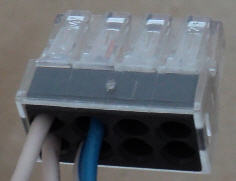
Well, the bolted connection is clear - a loop is made on the wire, a bolt is inserted, and steel washers are inserted between copper and aluminum.
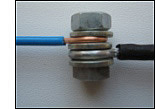 Such a connection is much more reliable than all terminal blocks and clamps, the only negative is the large dimensions, they take up a lot of space in the junction box.
Such a connection is much more reliable than all terminal blocks and clamps, the only negative is the large dimensions, they take up a lot of space in the junction box.
I did it myself, for example, at the entrance to the house - when it was necessary to connect copper cable with aluminum input from VL. Moreover, the cable was four-core, and the network was 220.
Then I made two cable cores per phase and zero, connected it through a bolted connection with a piece of aluminum wire, and this piece was already connected by power engineers to the input.
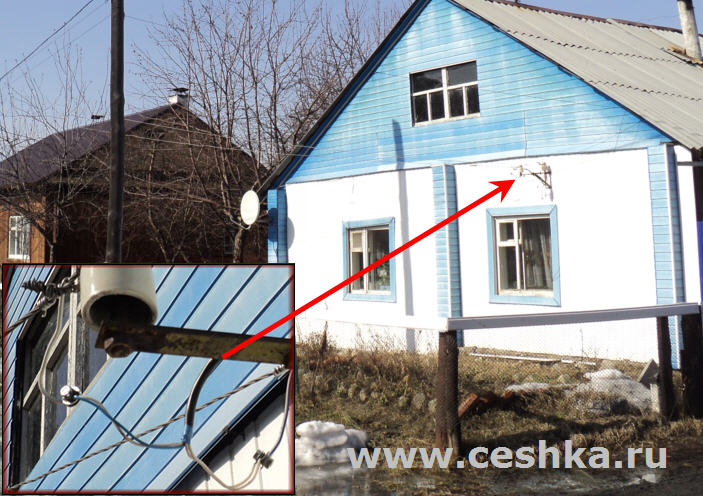
Already the second year has passed - there are no comments))) This is in the presence of an electric stove in the house and everything else - electric titanium, kettle, iron, microwave, etc.
Now about the layer of neutral material. I mean lead-tin solder.
How this is done I will show in the photo:
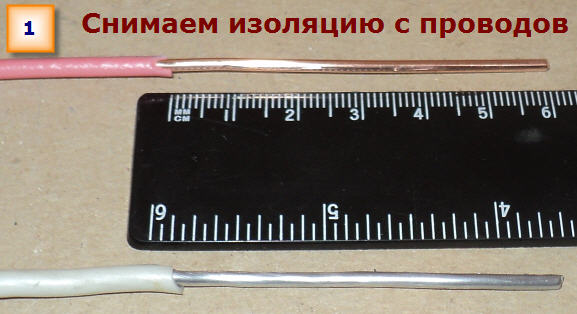
![]()
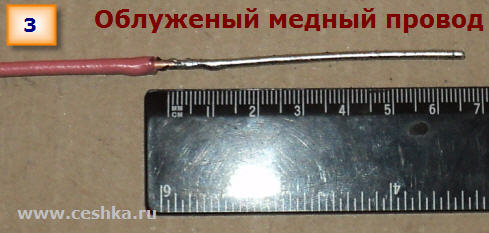
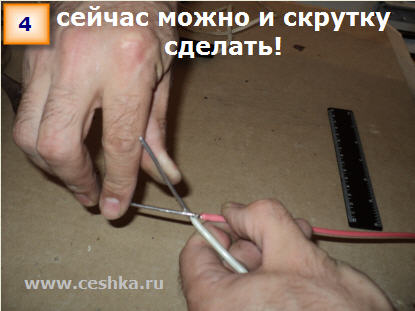
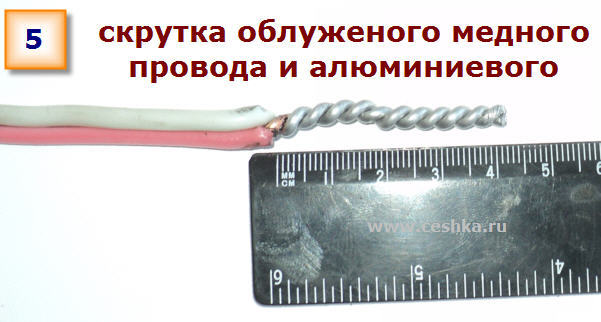
This is a good way out when there are no clamps on hand or do not want to use them, and the bolted connection does not fit in the box.
Then you need to cover the copper wire with solder and make a twist with aluminum - the connection will be reliable! Although the PUE is wrong ...
It requires either soldering-welding or terminal blocks-bolts, pure twisting according to the PUE is illegal ...
Although I personally once opened the lighting distribution box in an old house, there was a copper wire from the switch, and an aluminum wire to the light bulb. The twist was pure copper with aluminum without any terminal blocks, solder, etc.
So the state is as if just now!
Everything is clean, no oxidization and burning. I think this is because it was always dry in the apartment and besides, the switch box was tightly sealed in the wall - that is, air did not penetrate into it.
And therefore, aluminum did not oxidize, and besides, the load on the twist was minimal - only one light bulb was hooked up.
Therefore, if copper-aluminum junction passes through high current, then it is better to make a bolted connection as the simplest, more difficult - soldering.
But in this case, I would not recommend using the Vagovsky clamp, it is better to use other terminal blocks where the wires are at least clamped with a screw.
So now you knowhow to connect copper wire to aluminum and if you have to do it - I'm sure you'll make the right choice!
Be the first to know about new site content!
1. If a permanent magnet is pushed into the coil and an electric current appears in it, then this phenomenon is called:
A. Electrostatic induction B. Magnetic induction
C. Inductance D. Electromagnetic induction
D. Self-induction
2. Inductance in the SI system has the dimension:
A. C B. Tl C. Gn G. Wb D. F
3. Flux of magnetic induction through a surface area S is determined by the formula:
BUT. BS B. BScos AT. G. BStg D.
4. The rate of change of the magnetic flux through the circuit determines:
A. Circuit inductance B. Magnetic induction
C. EMF of induction D. EMF of self-induction
D. Electrical resistance contour
5. The magnetic flux through a circuit with an area of 10 cm2 is 40 mWb. The angle between the induction vectors and the normal is 60 . Induction module magnetic field equals:
A. 2∙10-5 T B. 8∙105 T C. 80 T D. 8 T E. 20 T
6. When the permanent magnet moves into the coil, the galvanometer needle deviates. If the speed of the magnet is increased, then the angle of deviation of the arrow:
A. Decrease B. Increase C. Reverse
D. Will not change E. Will become zero
7. When the current in the coil decreases by 2 times, the energy of its magnetic field:
A. It will decrease by 2 times B. It will increase by 2 times
C. Decrease by 4 times D. Increase by 4 times
D. Will not change
8. August 29, 1831 The phenomenon of electromagnetic induction was discovered:
A. Oersted H. B. Lenz E. W. Ampere A.
G. Faraday M. D. Maxwell D.
9. If, at a current strength of 3 A, a magnetic flux of 600 mWb occurs in the frame, then the inductance of the frame is:
A. 200 Gn B. 5 Gn C. 0.2 Gn D. 5∙10-3 Gn E. 1.8 Gn
10. The self-induction emf that occurs in a coil with an inductance of 0.2 H with a uniform change in current from 5 A to 1 A in 2 s is equal to:
A. 1.6 C B. 0.4 C C. 10 C D. 1 E. D. 2.5 C
11. In a coil made of aluminum wire (=0.028 Ohm∙mm2/m) with a length of 10 cm and a cross-sectional area of 1.4 mm2, the rate of change of the magnetic flux is 10 mWb/s. The strength of the induction current is:
A. 50 A B. 2.5 A C. 10 A D. 5 A E. 0.2 A
12. A straight conductor with a length of 1.4 mi with a resistance of 2 ohms, located in a uniform magnetic field with an induction of 0.25 T, is subjected to a force of 2.1 N. The voltage at the ends of the conductor is 24 V, the angle between the conductor and the direction of the induction vector is:
A. 0 B. 30 C. 60 D. 45 E. 90
13. In a coil with 1000 turns, with a uniform disappearance of the magnetic field for 0.1 s, an EMF equal to 10 V is induced. The flux penetrating each turn of the coil is equal to:
A. 10 Wb B. 1 Wb C. 0.1 Wb D. 10-2 Wb E. 10-3 Wb
14. A coil in the form of a solenoid with a cross section of 10 cm2 is placed in a uniform magnetic field, the induction of which changes with time, as shown in the graph. The magnetic induction vector is parallel to the coil axis. How many turns does the coil have if at the time t=3 with an induction emf equal to 0.01 V?
A. 20 B. 50 C. 100 D. 200 E. 150
15. Coil diameter d, which has N turns, is in a magnetic field directed parallel to the axis of the coil. What is the average value of the induction EMF in the coil if the magnetic field induction over time t increased from 0 to B?
A B C D E.
16. If, with a uniform decrease in current strength by 0.2 A in 0.04 s, an EMF of self-induction equal to 10 V occurs in the coil, then the inductance of the coil is ...
Palamedea / June 24, 2014, 11:48:29 PM
1, A current of 1 A flows through the conductor during the year. Find the mass of electrons that have passed through the cross section during this period of timeconductor. The ratio of an electron's charge to its mass e/te\u003d 1.76 * 10 ^ 11 C / kg.
2, In a conductor with a cross-sectional area of 1 mm2, the current strength is 1.6 A. The electron concentration in the conductor is 1023 m ~ 3 at a temperature of 20 ° C. Find the average speed of the directed motion of electrons and compare it with the thermal speed of electrons.
3, For 4 s, the current strength in the conductor l "increased linearly from 1 to 5 A. Plot a graph of the current strength versus time. What charge has passed through the cross section of the conductor during this time?
Fredledikaskelinjj / Oct 28 2014 02:41:35
Determine the resistance of an aluminum wire 150 cm long if its cross-sectional area is 0.1 mm2. What is the voltage at the ends of this wire,if the current in it is 0.5 A?
When installing electrical wiring, it is quite often necessary to connect different current conductors, namely, aluminum and copper wires. From the point of view of electrical and fire safety, this type of connection is more risky and must be carried out with strict adherence to a number of rules.
What is the essence of the problem of connecting aluminum and copper wires, and what are the options for solving it? Let's try to figure it out.
Difficulties connecting aluminum and copper wires
Over the past decades, there has been a rapid increase in energy consumption by the population. This has led to an increase in the burden on Electricity of the net and, accordingly, on the connection of wires in the wiring.
Therefore, today there are serious requirements for the installation of electrical wiring, aimed at improving electrical and fire safety.
Indicators of a reliable wire connection:
- The density of the contracted contact.
- Electrochemical compatibility of contact wires.
The first requirement of high-quality electrical wiring is quite simple to fulfill. The second requirement is often ignored in practice and incompatible current conductors are connected in a direct way (twisting). It is because of the electrochemical incompatibility of metals that difficulties arise when connecting copper and aluminum wires.
Aluminum is a metal with a high degree of oxidation. The oxide film formed on the surface of the aluminum wire in contact with moisture has a high resistance. This negatively affects the electrical conductivity of the connections.
Copper is a rather inert metal and the oxide film on copper wires has less resistance.
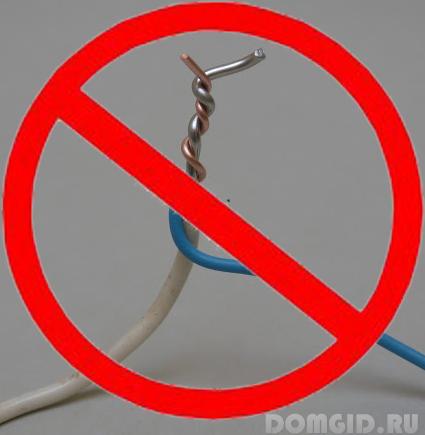
In a pair, copper and aluminum form a short-circuited galvanic connection - when moisture enters the contact, the aluminum wire begins to actively oxidize. A thin film with high resistance is formed between the current conductors, as a result, the current conduction becomes difficult, the electrolysis process takes place, shells, heating, and sparking of the contacts form at the point of contact. This situation may cause a fire.
The electrochemical potential between copper and aluminum is 0.65 mV, while the allowable value of this indicator is 0.60 mV
The solution to this problem is the elimination of direct contact between aluminum and copper wires. There are several options for connecting different conductors, ensuring the reliability and safety of electrical wiring.
The main methods of connecting different current conductors
application of terminal blocks
The most common way is to connect wires through terminal blocks.
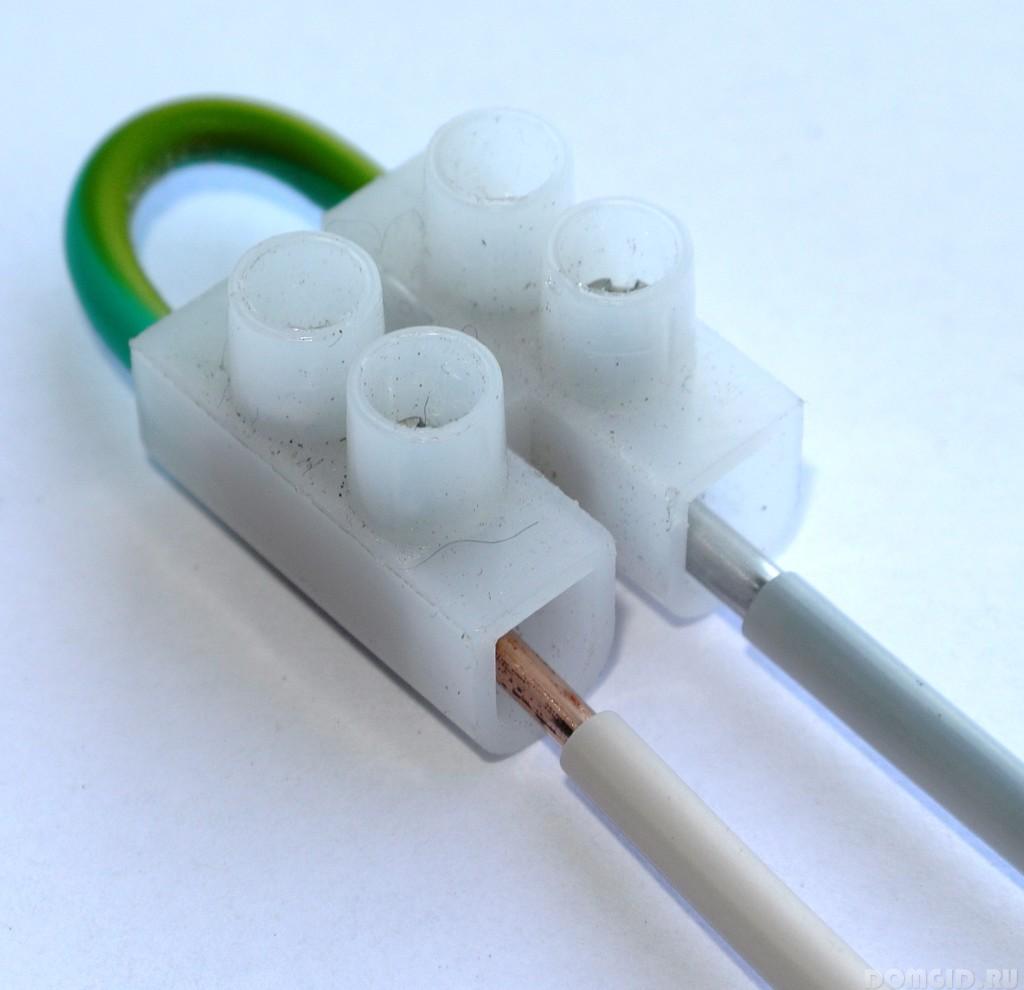
In essence, a terminal block is an insulating plate with contacts. Fastening wires in the terminal block is of two types:
- screw tightening (there is a risk of damage to the wire by the screw itself);
- pressing with plates (more reliable mounting option).
Among the advantages of the "terminal" method of connecting wires include:
- ease of connection;
- the connection does not need to be further isolated;
- affordable cost of adapters.
Copper connection sequence electrical wires with aluminum:
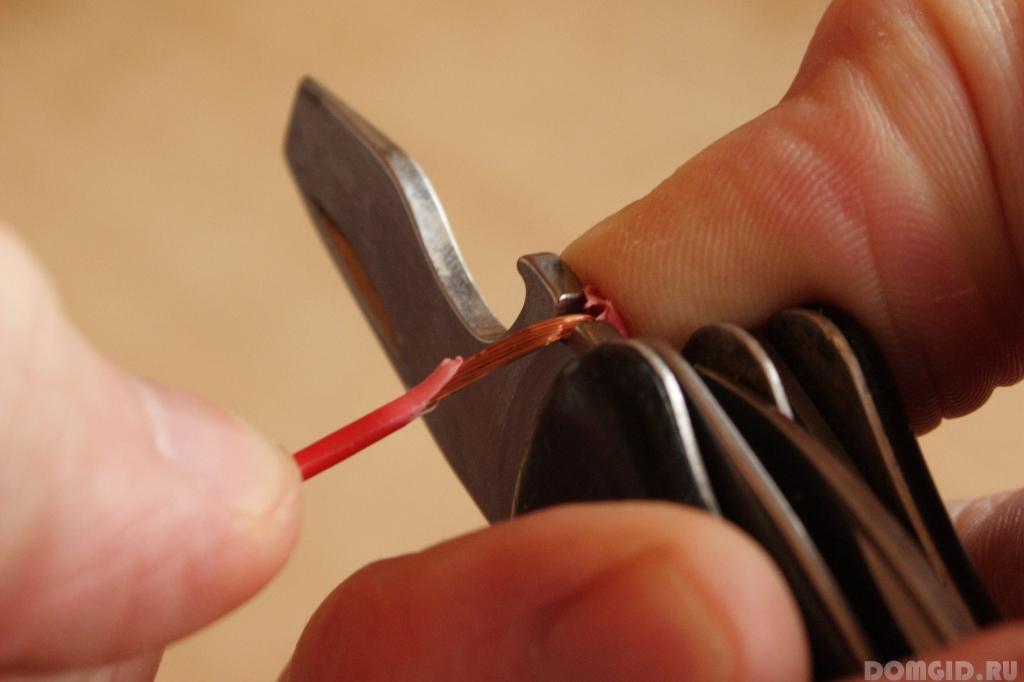
The terminal block is convenient to use when connecting a chandelier, when the conductor length is too short, or for connecting copper and aluminum wires that have been broken off and broken in the wall.
The terminal block, before being hidden under the finish, must be placed in a junction box
spring terminals for connecting wires
One of the varieties of terminal blocks are Wago spring clamp blocks.
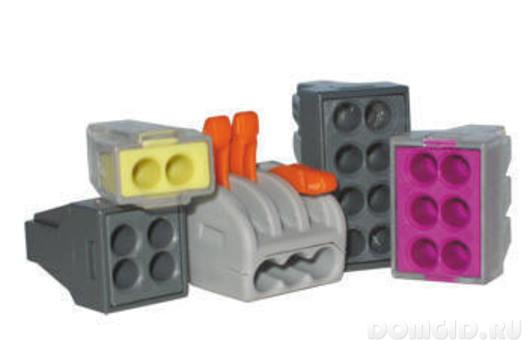
Spring terminal blocks - the most efficient and fast way wire connections. The main difference from conventional terminal blocks is the method of fixing the wire - a spring clip is used. It is enough to remove the insulating layer from the conductor and insert the wire into the terminal block.
In order to connect copper and aluminum wire, it is better to use special Wago terminal blocks. The contacts in such a terminal block are made of a bimetallic plate and coated with a special paste that prevents oxidation of the wires.
Spring terminal blocks are of two types:
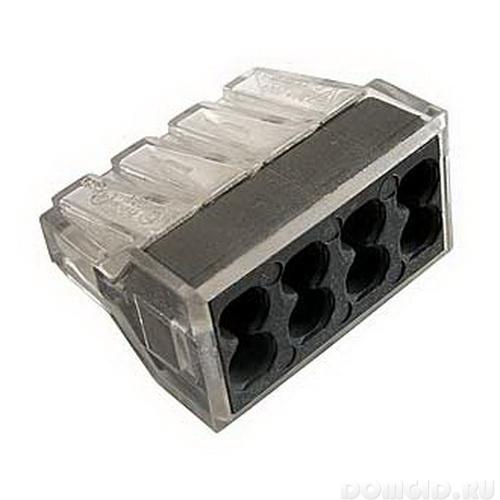
The disadvantage of spring terminal blocks is their cost, they are an order of magnitude more expensive than conventional adapters.
connection through the "nut"
To connect wires with a large cross section (4 mm² or more), you can use a branch clamp, known in everyday life as a "nut". It is an oval-shaped plastic case, inside which there is a block of metal plates. Aluminum and copper wires are clamped between the plates with screws.
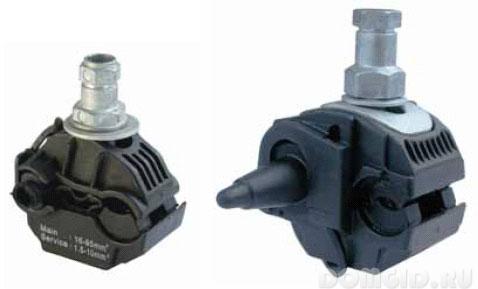
This connection option is not entirely convenient due to the large dimensions of the adapter itself, which is difficult to hide under the decoration of the room: skirting boards and boxes.
permanent connection
A permanent connection is made using a special tool - a riveter.
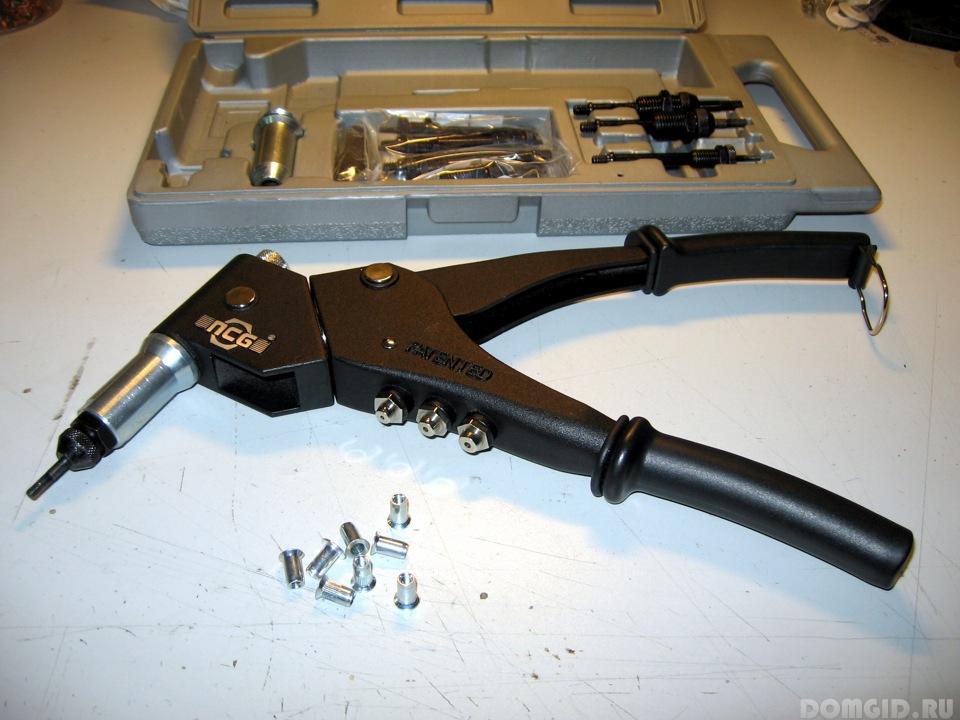
The principle of operation of the riveter is simple - retraction and subsequent cutting of the rod, which passes through the tubular rivet with a cap.
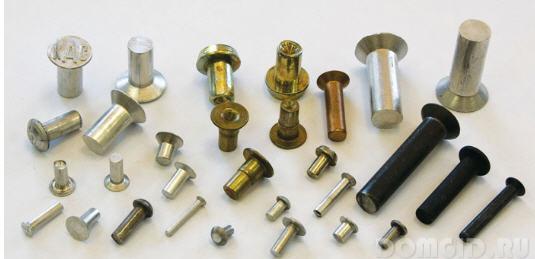
The wire connection technology is as follows:
- Remove the insulation from the conductors (the length of the cleaning is equal to 4 diameters of future rings). It is optimal if the diameter of the rings is slightly larger than the diameter of the rivet.
- Twist rings from the cleaned ends of the wire.
- Put all the elements on the rivet in the following order:
- aluminum wire;
- spring washer;
- copper wire;
- flat washer.
- Insert the steel rod into the riveter and squeeze its handles until a characteristic click.
- Bare areas of the connection must be isolated.
The reliability of the permanent connection is very high, the only drawback is that it is not possible to disconnect and re-fasten the wires.
Alternative ways to connect aluminum and copper wires
If there are no special adapters or a riveter at hand, you can use alternative methods for connecting different conductors.
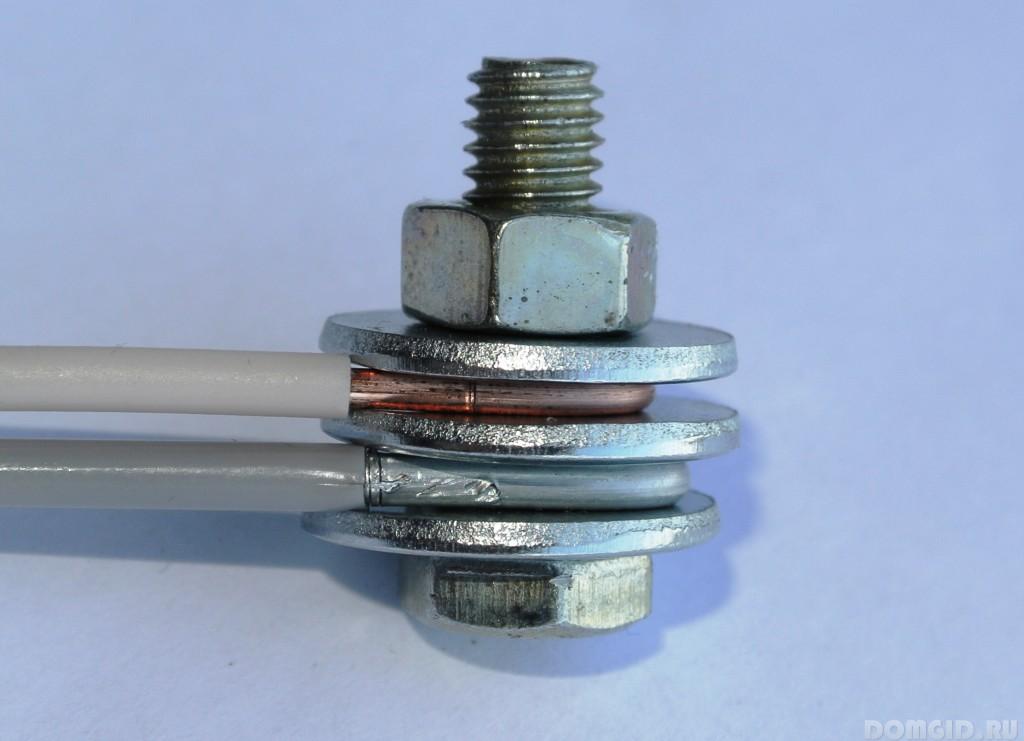
Bolted connection considered quite durable and safe. Among its advantages, one can single out ease of installation and versatility (in this way, almost any type and brand of aluminum wires can be connected to copper wires).
Bolted connection technology:
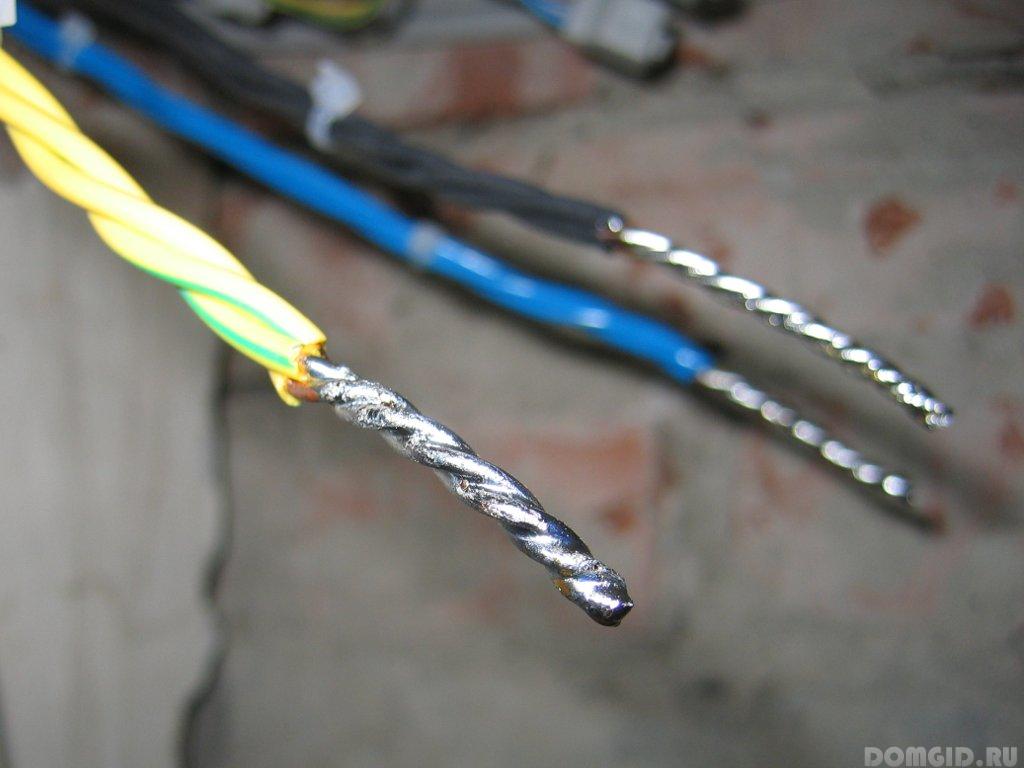
For connecting conductors with a cross section of less than 2 mm², an M4 screw is suitable
A technologically more complex and time-consuming method is applying solder to a copper wire. You can use lead-tin solder.
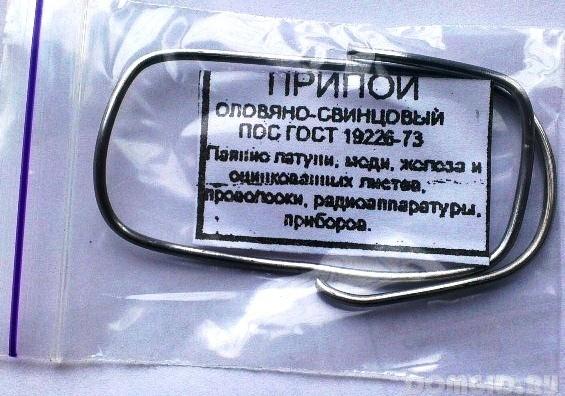
When aluminum comes into contact with lead-tin solder, the electrochemical resistance index is 0.40 mV (the permissible rate is not more than 0.60 mV)
The wire connection sequence will be as follows:
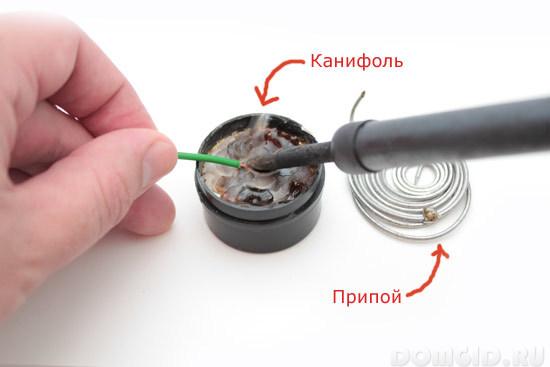
This method can be used if there are no jumpers or the bolted connection does not fit into the box. However, for an electrical wire with significant loads, such a connection cannot be used.
Features of connecting wires indoors and outdoors
Outdoor wire connections are exposed to external factors and need more protection.
The optimal solution for outdoor connections is the use of branch clamps for SIP. The material of the clamps is resistant to ultraviolet rays and low negative temperatures.
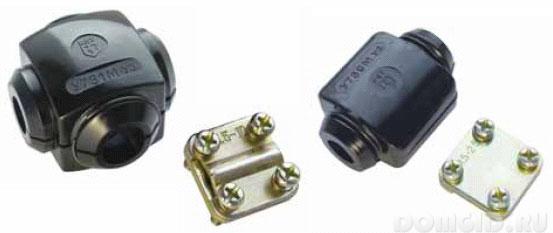
In addition, branch clamps nuts are also suitable for the street.
To connect the wires in the room, you can use different conductors. One of the most convenient is the Wago self-clamping terminal block.
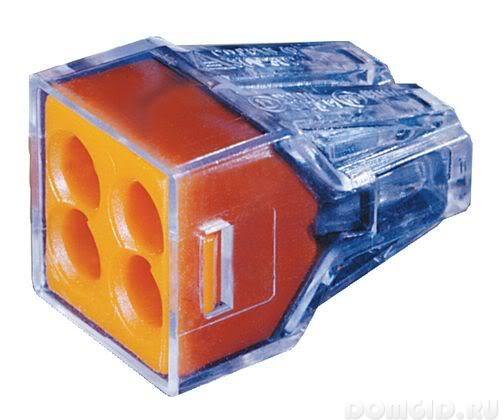
Expert advice: how not to connect aluminum and copper wires
There are frequent cases of the use of dangerous, unacceptable methods for connecting aluminum and copper wires, which had very sad consequences. These methods include:
- Stranding copper and aluminum wire. It should be noted that a number of experts do not recognize twisting, even if a layer of solder is applied to the copper wire.
- Twisting of wires with subsequent protection of the junction from moisture. As a waterproofing, some "craftsmen" use paraffin, oil or varnish. This method is unacceptable and, to put it mildly, ineffective.
To date, the problem of connecting different current conductors is solved very simply and quickly - just purchase one of the special adapters. Therefore, it is completely inappropriate to waste time and test untested methods, endangering the safety of not only housing, but also the people living in it.
In most new buildings, electrical wiring is initially made of copper wires. This is dictated by the increased load on the network, caused by a large number of electrical appliances. In addition, copper is more durable, does not oxidize and has best performance electrical conductivity.
But in old houses, aluminum wiring is everywhere. Many people, when planning a major overhaul, change aluminum wires to copper. However, not everyone has this opportunity. In addition, sometimes replacement is not possible for technical reasons.
What you should know
In these cases, it is necessary to connect aluminum and copper conductors to each other. But such a connection with a simple twist is forbidden: electrochemical corrosion begins between the wires, caused by natural humidity, such contact is quickly destroyed. It is best to connect wires from the same material.
But the connection of copper and aluminum conductors is quite common. For this you can use various ways which have proven themselves in practice. The most used options for making such a connection are presented below.
Methods for reliable connection of different wires
There are several ways to connect aluminum and copper in electrical wiring. The main task of all these methods is to ensure the reliability and durability of the contact, while minimizing the possibility of electrochemical corrosion.
screw connection
The screw method of connecting aluminum and copper conductors of wires is simple, while being reliable and durable. This option can be used if it is necessary to connect wires of different or large cross sections. The essence and technology of this method is as follows:
- The ends of both wires are cleaned of insulation (approximately 30 mm);
- With the help of round-nose pliers, the ends are bent into a circle.
Then a bolt of suitable size and diameter is taken. The assembly of the structure is carried out in the following order:
- A regular washer is put on the bolt;
- Circumference of the first conductor;
- Another puck;
- Ring of the second wire;
- One more puck;
- The design is clamped with a nut;
One of the advantages of this method is the ability to connect more than two wires. The maximum number of strands to be clamped is only limited by the length of the bolt.
When making such a connection, do not forget to put washers between the wires: copper should not be allowed to come into contact with aluminum conductors.
Wire twisting
This method is also widely used in practice, but requires a special approach. In order for the twisting of copper and aluminum conductors to be durable, and corrosion does not form between them, it is better to proceed as follows:
- The cores are stripped of insulation (at least 4 cm);
- Copper wire must be tinned with tin solder;
- After that, the usual twisting of current-carrying wires is carried out among themselves;
- To increase the protection of such a connection from moisture, it can be treated with a special heat-resistant varnish;
- After the varnish has dried, the twist is securely insulated and ready for use.
Twisting should be done in such a way that the cores are twisted together. Wrapping one wire around another is unacceptable!
Terminal blocks
The use of screw blocks is very popular and widely used in practice. This method has proven itself best in electrical panels, where there is a need to connect a large number of wires. Blocks are also used in junction boxes, providing collapsible contacts, which facilitates inspection and repair if necessary.
Consider the order of work when choosing this method to connect copper and aluminum:
- As usual, the ends of the wires need to be stripped. The insulation is removed by about 0.5–1 cm;
- After that, the stripped ends are inserted into the terminals and clamped with screws with medium force so as not to break the cores.
Advice! Before clamping solid wires with screws, it is better to flatten them a little with a hammer or pliers. This is necessary to increase the contact area.
This method is applicable to both black plastic pads and terminals with thinner white plastic insulation. When asked which block is better, there is an opinion that white terminal blocks are less reliable (mechanically). Therefore, they are more often used as an adapter for connecting lamps, chandeliers and other low-power consumers.
Separately, we note that it is possible to hide the terminals under the plaster only if they are enclosed in a junction box.
Clamps and terminal blocks WAGO
More modern version pads are equipped with a clamp of the German manufacturer WAGO. These terminals are available in two types:
- One-piece pads have a cast, often transparent body. To fix the cores, it is enough to insert the cleaned ends of the wires into such a cap, the clamp will securely fix them. The disadvantage of this method is its one-time use: in order to redo the connections, you will need to bite off the old clamps;
- Detachable terminal blocks are free from this drawback. A special lever makes it easy to fix the wires, and if necessary, disassemble the connection, just lift it up, the clamps will open and the ends will come out of the terminal.
Using these clamps, you can make a multi-core (from 2 to 8) connection, and also use the terminal block as an adapter for a branch in the wiring. Another advantage this method connect copper and aluminum - this does not require additional insulation of contacts. The body of WAGO pads is fully insulated and reliable.
Permanent connections
Finally, consider another way how to connect copper to aluminum wires. This will require a special riveting tool. Now such devices are widely popular, and many masters already have them.
The technology of this method is similar to the method using a bolt and nut. Consider how, using a riveting tool, you can perform reliable connection electrical wires:
- After stripping the cores from insulation, the ends are folded into a small ring with round-nose pliers. It is important that the diameter be as small as possible so that the rivet does not dangle too freely;
- Then the structure is assembled in the same order as with the screw method: copper and aluminum conductors are put on the stud, a small washer is used as a gasket;
- After that, the rivet rod is placed in the head of the device, the handles of which are compressed until they click. Connection is ready!
The disadvantage of this method is the inability to disassemble the structure. If you need to connect another wire, the rivet will have to be cut out and reconnected. Also, do not forget about the importance of isolating this area: you can use cambric or insulating tape.
Summing up
We have studied the most common and used cores made of various materials: copper and aluminum. They are reliable, provide durable contact and exclude oxidation that leads to electrochemical corrosion.
Until now, there is a considerable number of premises where electrical wiring is made of aluminum. At the same time, modern systems are based on the use of copper as a conductor. That is why the problem of joining wires from these dissimilar materials is relevant. How to join copper and aluminum wires will be discussed below.
Electrochemical corrosion
It is often possible to meet statements that it is undesirable to combine copper and aluminum into one. From the point of view of material compatibility, these are fair statements. What about combining copper and zinc or steel and silver? There are many options for metal pairs, and remembering which ones are compatible with each other and which are not is difficult. To simplify the task, there are special tables, one of which is presented below.
Table of electrochemical potentials (mV) that occur between connected conductors.
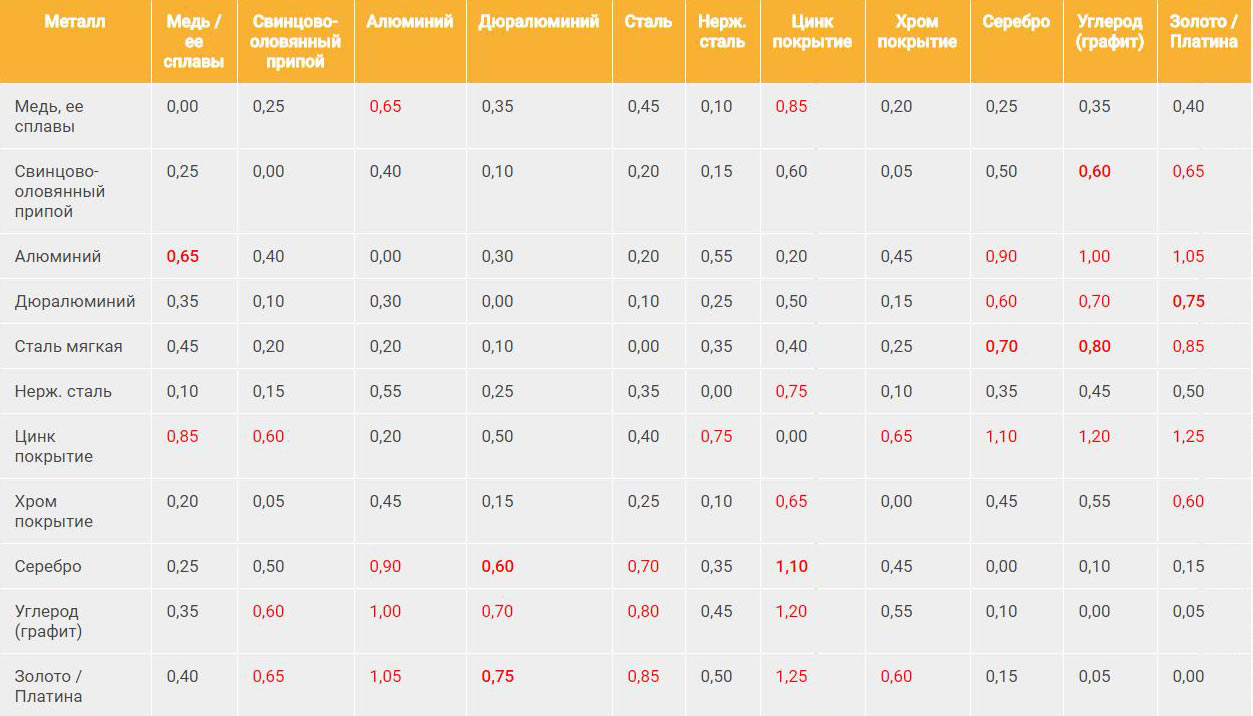
To understand the issue, you need to know what processes occur when different conductors of electricity touch each other. If there is no humidity, the contacts will be reliable anyway. However, in practice, this situation is impossible, since moisture is always present in the atmosphere, which breaks the connections.
Each conductor of electricity has a certain electrochemical potential. This circumstance is used by a person for practical purposes, for example, batteries and batteries work on the basis of different potentials.
When moisture gets on the contacting metal surfaces, a short-circuited galvanic medium occurs, and one of the electrodes is deformed. In the same way, one of the two metals is destroyed. Thus, in order to determine the compatibility of metals, it is necessary to have information about the electrochemical potential of all materials involved in the reaction.
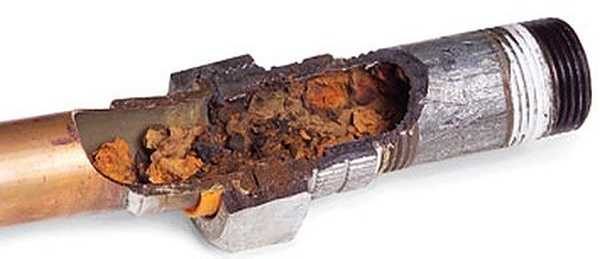 What happens if copper is connected directly to aluminum
What happens if copper is connected directly to aluminum According to technical regulations, mechanical joining of metals is allowed if the electrochemical voltage between the two materials is not higher than 0.6 mV. For example, from the table above, it can be established that in the case of a combination of aluminum and copper, the electrochemical potential is 0.65 mV, which is much higher than when the same copper is joined with duralumin (0.20 mV).
And, nevertheless, if it is very necessary, then it is possible to combine such not quite compatible materials, which include copper and aluminum. How to connect copper and aluminum wires will be discussed below.
Overview of connection methods
There are several ways to connect aluminum and copper wires. Moreover, in each of the described cases, special devices will be needed. Let's consider each type of docking separately.
This type of connection is the most common, since it is simple and cheap. If done correctly, a wired connection with nuts and bolts will provide reliable contact for the life of the wiring and electrical appliances. In addition, you can always disassemble the connection, attach additional conductors, etc. Thanks to the threaded connection, the relevance of the electrochemical incompatibility of metals is lost, it becomes possible to join aluminum and copper, thick and thin wires, stranded and single-core. It is important to avoid direct contact between dissimilar materials by making gaskets from spring washers.
To do the job, you will need a bolt and nut, as well as a washer (it must be made of anodized steel).
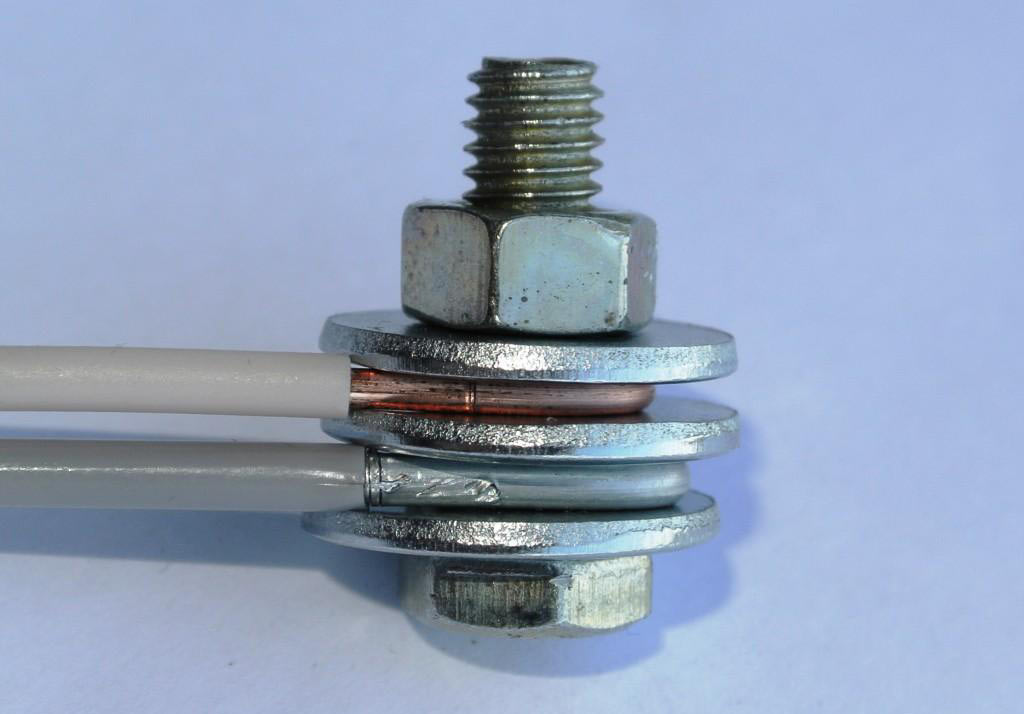
The connection is made as follows:
- We remove the insulating layer from the wires for a short length (about four bolt diameters). We also perform stripping of the conductor, especially if its cores have undergone oxidation. We form rings from the veins.
- First, an aluminum conductor is screwed to the bolt in one girth.
- We put on the puck.
- Now it's the turn of the copper conductor. We also screw it in one turn.
- Next, screw the nut in such a way as to achieve a secure connection.
Note! If docking is carried out for operation in a room where specifications there is vibration, for a quality result you will need an additional nut.
Terminals
There are several options for terminal connections. One option is the so-called "nuts". Such an unusual name for terminal blocks comes from their external resemblance to nuts. There are several varieties of "nut" terminals available.
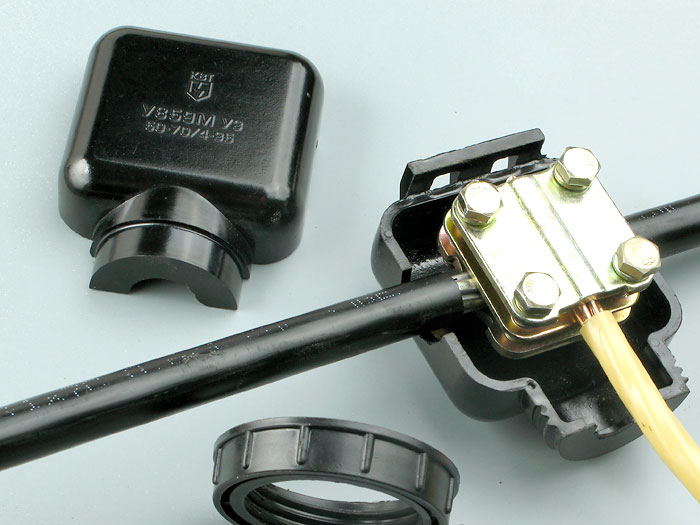
The model, which is the most primitive in its structure, has three delimiting plates inside. Conductors are located between the plates. Thus, it is possible to avoid direct contacts between dissimilar materials. At the same time, "nuts" allow you to save the supply circuit of the electrical circuit.
To achieve the integrity of the circuit, it is necessary to strip the supply conductor from the insulating layer, unscrew a couple of bolts, install a bare wire between the plates and tighten the bolts again. Remove the insulator from the outlet ends, and then direct the wires into holes located perpendicular to the inlet channel. Further, the conductors are fixed between other delimiting plates.
There is also a more complex model on the market, the design of which is designed in such a way that there is no need for cutting conductors. The fact is that the plates of the device contain teeth, which, when squeezed by bolts, simply break the insulating layer. The described docking option is considered very reliable.
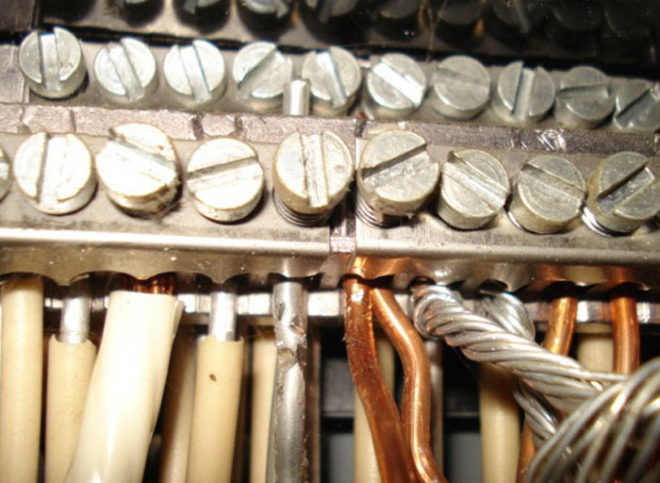
There is another option for terminal blocks - ordinary pads. The device is a bar with terminals. To connect two dissimilar materials, you need to strip their ends and send the wires to the terminals. The ends are fixed with bolts that are located over the terminal holes.
Wago terminal blocks
The connection of copper and aluminum wires can be done using Wago terminal blocks. This device belongs to the aforementioned terminals, however, Wago pads should be described in a little more detail due to their popularity among buyers.
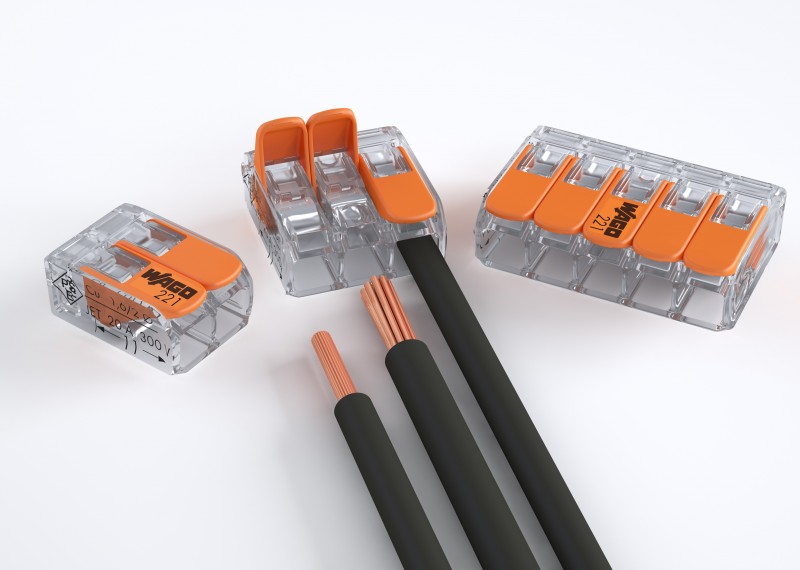
Wago is made in two versions: disposable with a non-removable wire and reusable - with a lever that allows you to repeatedly install and remove the conductor.
Wago is used for all types of solid wires, the cross section of which is between 1.5 and 2.5 square millimeters. The block can be used in distribution boxes with a current of up to 24 amperes. However, in practice, it is believed that 10 amperes is more than enough and large figures will lead to overheating.
![]()
To connect the conductors, it is necessary to force one of them into the shoe hole, as a result of which it will be securely fixed there. To remove the conductor from the hole, you will also need to apply force. Please note that removing the wire from the disposable terminal block may deform the contact, so a reliable contact is not guaranteed next time.
It is much more convenient to use the Wago reusable device. Feature such a terminal block - the presence of an orange lever. With the help of such a device, it is possible to dock or disconnect all types of wires with a cross section from 0.08 to 4 square millimeters. Permissible current level - 34 amperes.
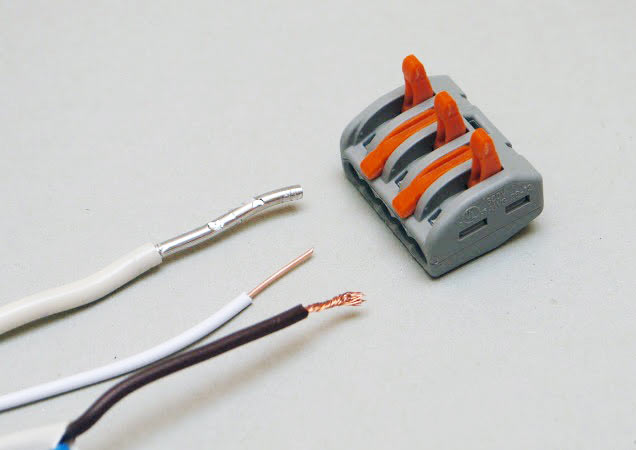
To create a connection, you need to remove the insulation from the wire by 8-12 millimeters, raise the lever up, direct the wire into the hole in the terminal block. Next, return the lever to the opposite position, thereby fixing the wire in the terminal.
The only significant drawback of Wago is the higher cost compared to traditional terminals.
Rivets
This method of joining dissimilar conductors resembles a bolted one. However, instead of a nut and a bolt, a rivet is used, which forms a permanent connection. In other words, after fixing, it is no longer possible to remove the rivet without damaging it.
To perform the docking, we clean both conductors from the insulating material, and also bend the wires into rings. Next, we string one of the rings onto the rivet, after that we put on a steel washer, then we string the ring again, but already the second conductor.
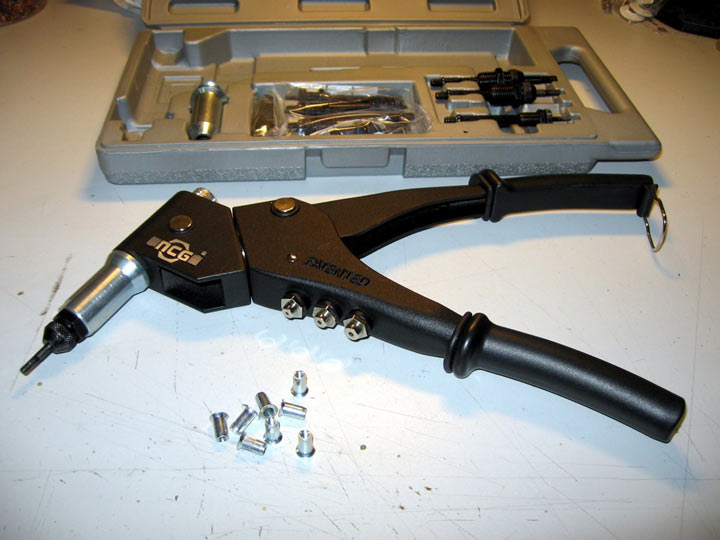
The rivet has a cap on one side. Now you need to flatten the second side, thus forming a second hat, which will act as a fastener. The deformation of the rivet is carried out either with a hammer or with a special tool similar to pliers. The method of joining with rivets allows you to get a very high-quality connection.
soldering iron
If desired, you can solder two dissimilar metals. However, this will require compliance with some technological nuances.
As for copper, there will be no problems with soldering, but with aluminum the situation is more complicated. The fact is that as a result of soldering and under the influence of oxygen on metal surface amalgam appears. This alloy-film is incredibly chemically resistant, which means it does not adhere to solder. To eliminate the film, you will need a solution of copper sulfate, a Krona battery and a piece of copper wire.
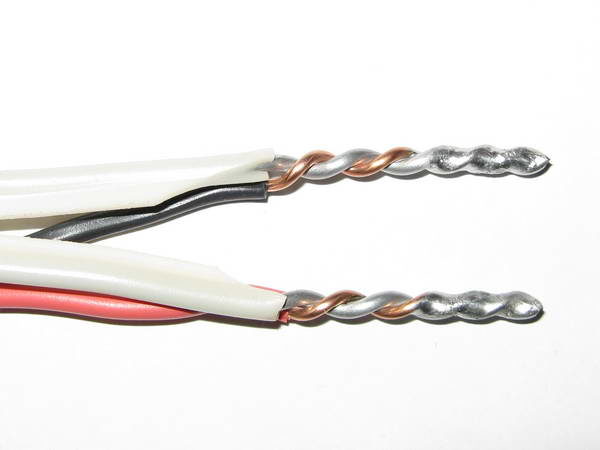
On the aluminum wire, we clean the soldering area, and after that we apply a little vitriol there. We fix the aluminum wire on the negative pole of the battery, and we fix the copper wire with one end on the positive pole, and put the other end in copper sulfate. After some time, aluminum will be covered with a copper layer, on which you can solder a copper conductor.
Connection quality
In most of the cases considered earlier, rigid fastening of the conductors cleared of the insulating layer will be used. However, when joining copper and aluminum, one important technological nuance must be taken into account: aluminum under the influence of the load acquires plasticity, as experts say, it begins to "flow". As a result of this process, the connection is weakened, and therefore the bolts must be tightened regularly. If the bolts are not tightened in time, the terminal may simply catch fire due to severe overheating.
There are a number of rules, adhering to which, you can achieve a high-quality connection:
- Conductors with multiple strands must not be clamped too tightly. In such wires, the cores are too thin, they are easily torn under the influence of compression. The result of the gaps is an overload on the remaining cores, which may cause a fire.
- It is important to choose the right terminal, taking into account the cross section of the conductor. If the channel is too narrow, the conductor will not fit, and if it is too wide, it will fall out.
- Brass sleeves and terminals are very fragile, so do not overtighten them.
- You should carefully consider the marking, where the maximum possible current strength is suggested. Moreover, it is better not to achieve this indicator, limiting yourself to no more than 50% load.
Note! It is not recommended to buy nameless products made in China. Connectors - too important detail to save on them. It is best to give preference to products of well-known companies (for example, the Swiss company ABB).
stranded wires
As mentioned earlier, conductors with many strands should not be strongly pinched. For connection stranded wires most often sleeves or ordinary twists are used. We will discuss these methods in more detail below.
Sleeves
The sleeve is a protective cap made of plastic, under which there is a hollow metal tip. First of all, it is necessary to remove the insulating layer from the conductor. Further, the veins are twisted into one whole, and the resulting "pigtail" is sent to the sleeve. Next, the sleeve is crimped (pliers are suitable for this operation). The tip of the sleeve is inserted into the terminal. To increase the reliability of the connection, the sleeve can be treated with solder.
Twisting
Among professional electricians, twisting is not revered. However, there are situations when twisting is the most convenient way out (for example, to create a temporary connection or in the absence of the necessary materials).
So, twisting from copper and aluminum is allowed only after a thorough cleaning of the aluminum surface. If the copper conductor has many strands, all available strands must be assembled into one "pigtail". Also, copper must be coated with solder - this will improve contact.
When twisting, it is important to prevent the wires from breaking. The endings are best covered with insulating protective caps, which can be purchased at any hardware store.
Note! Twisting is unacceptable in rooms with humid air.
So, there is nothing complicated in connecting copper and aluminum conductors. You just need to remember the price of a mistake: incorrectly connected wires can cause not only the failure of electrical appliances, but also a fire.





